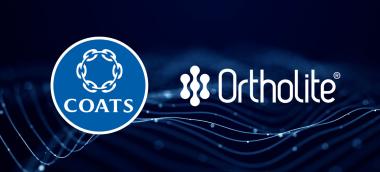Heraeus Precious Metals & RUDOLF: Strategic Partnership Bringing AGXX Technology to the Textile Industry
Heraeus Precious Metals, a leading company in the precious metals industry, and RUDOLF, an international specialist in textile chemistry, have signed an agreement for the exclusive marketing of products for textile finishing and textile care. The cooperation focuses on Heraeus Precious Metals‘ AGXX technology, a groundbreaking antimicrobial innovation that has the potential to transform the textile industry in the long term.
AGXX works in a fundamentally different way to conventional biocides, especially silver technologies. The technology is based on a catalytic reaction triggered by the interaction of two precious metals. In the presence of air humidity, oxygen is converted into reactive oxygen species. These kill odour-causing and other microorganisms and also have an oxidative effect on odour-causing residues. As the mechanism is based on a circular redox system, AGXX technology is not consumed but continuously regenerated. The versatile technology can be integrated into textile finishing processes as well as directly into fibres and yarns.
By integrating the AGXX technology developed by Heraeus Precious Metals, RUDOLF is specifically expanding its portfolio with a technologically advanced solution for the functionalisation of textiles.
The strategic expansion of its product portfolio will enable the company to position itself even more clearly as an innovation leader in a dynamic market environment. Based on AGXX technology, it offers its customers optimised, market-ready products that provide them with differentiated added value in the areas of textile (initial) finishing, care and aftercare applications for industrial, commercial, professional and end-user purposes.
Martin Danz, Global Head of Antimicrobial Technologies at Heraeus Precious Metals, comments: „Our strategic collaboration with RUDOLF is a significant step towards the further development of the textile market. Together, we will continue to develop the application possibilities of AGXX particles in textile finishing and explore new areas of application and effectiveness for the technology.“
Marcos Furrer, Chief Executive Officer (CEO) of RUDOLF, explains: „This partnership sends a clear message: we are combining two strong innovative forces to give the textile industry new impulses. AGXX technology complements our portfolio perfectly – it is powerful, performance-oriented and offers real added value for our customers. Together with Heraeus Precious Metals, we are creating solutions that are functionally impressive and at the same time meet the growing demands of the market.“
Heraeus Precious Metals Rudolf textile finishing Textile Care AGXX technology textile chemistry
Heraeus Precious Metals

















